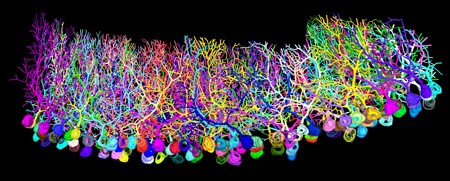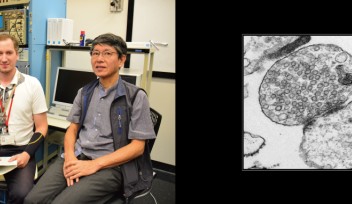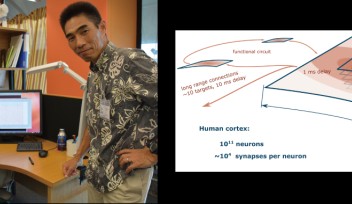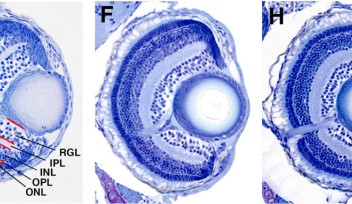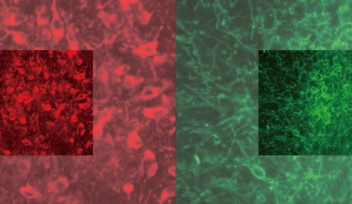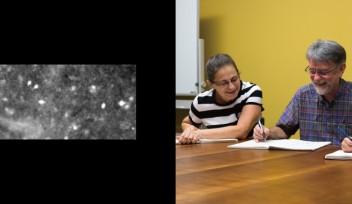A 3D reconstructed “forest” of neurons
by Micheal E. Cooper
OIST researcher Hermina Nedelescu combines genetics, microscopy and computational anatomy to unravel the dense neuronal forest of Purkinje cells in the adult cerebellum.
by Micheal E. Cooper
OIST researcher Hermina Nedelescu combines genetics, microscopy and computational anatomy to unravel the dense neuronal forest of Purkinje cells in the adult cerebellum.
Purkinje cells are large neurons in the cerebellum, a part of the brain that plays a primary role in motor control. Purkinje cells form elongated branching structures called “dendritic trees”.
To create this movie of multiple neighboring reconstructed “dendritic trees”, researchers used “Brainbow” mice. These transgenic mice have had genes from other organisms incorporated so that each Purkinje cell expresses a random amount of three different fluorescent proteins – red, yellow, and blue. Depending on how much of each protein is expressed, the Purkinje cells appear as different colors, so that many cells together look like a rainbow, hence the term “Brainbow.”
This movie enables researchers to see one hundred individually distinguishable Purkinje cells and study their structure and location in respect to one another. In this way, they aim to unravel the structure of the “Purkinje cell dendritic forest”.
Movie by Hermina Nedelescu of the OIST Computational Neuroscience Unit (Erik De Schutter, Principal Investigator), in collaboration with Alanna Watt of McGill University, Canada, and Hermann Cuntz of Goethe University, Germany.
Specialty
Research Unit
For press enquiries:
Press Inquiry Form






